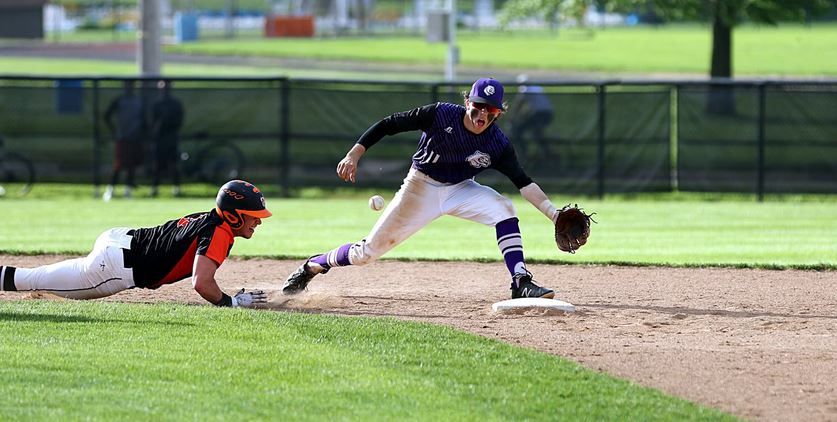What does ERA mean in baseball, and why is it so important? Whether you’re a casual fan or diving deeper into the game, understanding ERA (Earned Run Average) can change how you see pitching performance. ERA is a simple but powerful stat that helps you quickly gauge how well a pitcher prevents runs. Knowing how ERA works not only enhances your enjoyment of the game but also gives you valuable insights into your favorite players. Ready to become a more informed fan? In this guide, we’ll break down everything you need to know about ERA—step by step. Let’s get started!
What Is ERA in Baseball?
ERA stands for Earned Run Average, and it’s one of the most important statistics in baseball, especially when evaluating pitchers. It shows how many earned runs a pitcher gives up on average per nine innings. The lower the ERA, the better the pitcher is at preventing the opposing team from scoring.
But what exactly are earned runs? These are runs that the other team scores without the help of errors or passed balls by the defense. So, if a pitcher gives up runs because the fielders made mistakes, those runs don’t count against their ERA.
Here’s a simple way to think about it: ERA helps us understand how good a pitcher is at doing their main job—keeping the other team from scoring. It focuses only on what the pitcher can control, without punishing them for mistakes made by the defense.
For example, if a pitcher has an ERA of 3.00, it means they give up an average of three earned runs every nine innings. In general, a lower ERA means a better pitcher, while a higher ERA shows they may have more difficulty stopping the other team.
Why does ERA matter? Coaches, teams, and even fans use ERA to quickly compare pitchers. It’s a simple and clear way to understand a pitcher’s performance over time, making it easier to decide who might be the best choice for a game or season.
ERA helps highlight the value a pitcher brings to the team, making it one of the most popular stats for judging success on the mound.
How Is ERA Calculated?

Calculating ERA is actually quite simple once you understand the basic formula. The formula for ERA is:
ERA = (Earned Runs / Innings Pitched) × 9
Let’s break that down:
- Earned Runs are the runs a pitcher gives up that aren’t caused by errors or passed balls.
- Innings Pitched refers to the number of innings the pitcher has thrown during a game or season.
- The multiplication by 9 is there because ERA measures how many runs the pitcher would give up if they pitched a full game of 9 innings.
For example, if a pitcher has given up 10 earned runs in 30 innings, their ERA would be:
ERA = (10 / 30) × 9 = 3.00
This means the pitcher gives up an average of 3 earned runs every 9 innings. Now, let’s take a closer look at a couple of important aspects of ERA calculation:
Earned Runs vs. Unearned Runs
An earned run is a run that the opposing team scores without any help from fielding errors or passed balls by the catcher. This distinction is important because errors or mistakes by the defense shouldn’t affect the pitcher’s ERA.
For example, if a player hits a home run, that’s an earned run. But if a fielder drops the ball and allows a player to score, it’s considered an unearned run and doesn’t impact the pitcher’s ERA.
Impact of Innings Pitched
The number of innings pitched plays a major role in determining ERA. The more innings a pitcher throws, the more accurate their ERA becomes over time. If a pitcher only throws a few innings, a couple of bad plays could make their ERA look worse than it really is. On the other hand, if they’ve pitched many innings, it gives a more accurate reflection of their performance.
So, while a lower ERA is great, more innings pitched gives that number more reliability. A pitcher with a low ERA over many innings is considered more consistent than one with a low ERA after just a few games.
check: ERA Calculator Baseball online
What Is a Good ERA in Baseball?
A “good” ERA can vary depending on the level of competition and the era of baseball you’re watching, but generally, a lower ERA means better performance. Here’s a breakdown of what different ERA ranges typically mean:
- Below 3.00: Excellent – Pitchers with an ERA below 3.00 are usually considered top performers. This is the kind of ERA you’ll see with some of the best pitchers in Major League Baseball (MLB).
- 00 – 4.00: Good – An ERA in this range is still very solid and represents a pitcher who is consistently effective. Many successful pitchers fall into this range.
- 00 – 5.00: Average – This ERA is considered middle-of-the-pack. Pitchers with ERAs in this range may have a few bad games, but they’re still contributing to their team.
- Above 5.00: Below Average – A pitcher with an ERA above 5.00 might be struggling. This means they’re allowing too many runs on average and need to improve to stay competitive.
ERA Can Change Over Time
One important thing to remember is that ERA can vary based on the time period. For example, in the early 1900s, pitchers generally had lower ERAs because games were different, and there were fewer home runs. Today, with more power hitters, pitchers might have higher ERAs even though they’re still excellent.
ERA by League and Competition
ERA also varies depending on the league or competition. A good ERA in Major League Baseball (MLB) might be different from one in the minor leagues or in other countries like Japan’s Nippon Professional Baseball (NPB). Different leagues have different levels of competition, rules, and playing conditions that can affect how many runs a pitcher allows.
Read: What Are Baseball Sliding Mitts
ERA in Different Baseball Leagues
ERA can vary a lot depending on which league a pitcher plays in. Different leagues have unique rules, competition levels, and even ballparks, all of which can impact a pitcher’s ERA. Let’s take a closer look at how ERA compares across the major baseball leagues:
Major League Baseball (MLB)
In Major League Baseball (MLB), ERA is one of the most commonly used stats to judge a pitcher’s performance. The competition in MLB is very high, with the world’s best players, so pitchers with ERAs under 3.00 are often seen as elite. However, even a pitcher with an ERA around 4.00 can have a successful career in MLB due to the high level of hitters they face.
Minor Leagues
In the minor leagues, the level of competition is lower than in MLB, which means pitchers can often have lower ERAs. Players are still developing their skills, and pitchers may dominate more often than in MLB. A pitcher with a 3.00 ERA in the minors might not find it as easy to keep that ERA when they move up to the major leagues.
International Leagues
Leagues in other countries, like Japan’s Nippon Professional Baseball (NPB) or Korea Baseball Organization (KBO), also have their own standards for ERA. Pitchers in these leagues may have slightly higher or lower ERAs depending on factors like the number of games, rules, or even ballpark sizes. For example, Japanese pitchers are known for their precision, and some maintain very low ERAs due to their skillful control.
College and Amateur Leagues
In college or amateur baseball leagues, ERA can vary a lot. College pitchers may have very low ERAs, especially if they are standout players compared to their competition. However, these numbers might not always reflect how they’ll perform in professional leagues, where the hitters are much stronger.

